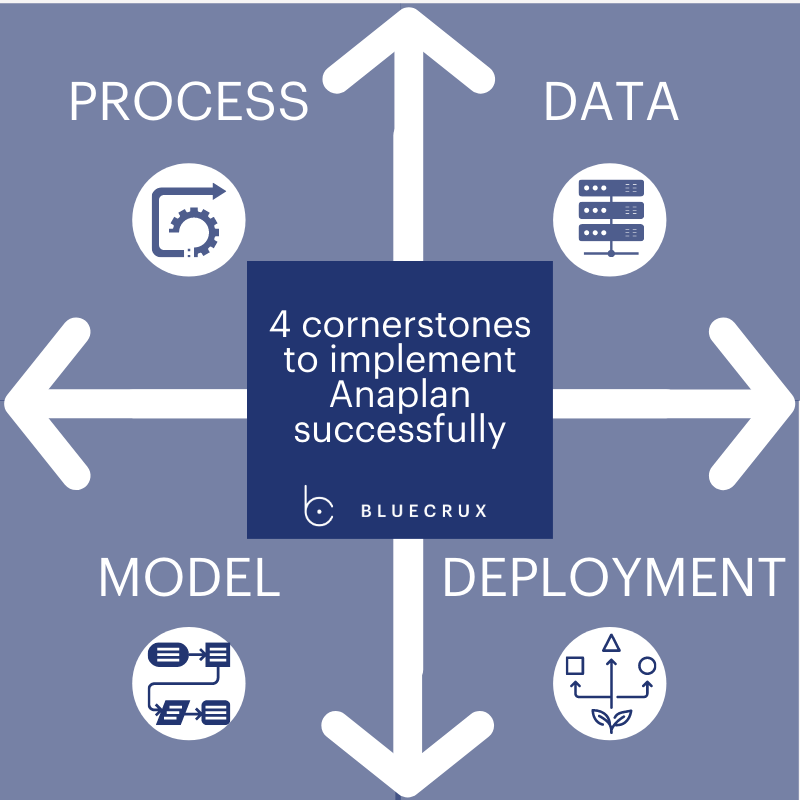
Toward a successful connected planning journey
With the world changing at a faster pace than ever before, the need for organizations to be able to react quickly is drastically increasing. This has impacted the way we have designed our business processes, but in the complex environments of today, having processes in place without system support is not enough. We need connected planning.
There’s a need to own a planning tool that enables your people to make well-informed decisions, leverage real-time, end-to-end visibility and have the possibility to run as many “what-if” scenarios as needed to make the right trade-offs. But how?
Just keep on reading and discover which key focus areas to consider when implementing connected planning software, the risks and opportunities of a flexible modeling platform out there, and how powerful co-creation with your customers can be.
Finding the right balance
When working with any flexible platform, the rule of thumb should always be: it is not because you can model everything in the tool that you should. Challenging the current process and being able to prioritize certain business needs is crucial for maintaining success in delivery. This will help in keeping control of the scope of the implementation and delivering a working product on time.
An Anaplan implementation, for example, is not a typical out-of-the-box solution that is adapted and configured for your planning processes. You start from your core business needs and start creating the rules and models needed to plan your business. If you compare it to building a car, you would start with the frame and the engine, designing the foundation of your demand, supply or S&OP planning process. Then, you start putting in the seats, speedometer and steering wheel, which you could compare to the dashboards in Anaplan, which your planners will use to drive the car.
The strategy of Anaplan in this context is not about starting from scratch and reinventing the wheel, nor is it offering an out-of-the-box or one-size fits all solution. You can find Anaplan somewhere in the middle: there are models to leverage, but there is a strong focus on addressing your specific needs and modeling your business process.
Say hi to your MVP
In the area of IT system implementations, we have seen a shift from the classical waterfall approach to a more agile approach, and Anaplan is no exception. In volatile business environments where changes come at you fast, an agile approach is way more effective than the traditional waterfall approach. The agile approach is an iterative way of building the platform, where you are highly involved during the project, and you have frequent opportunities to test, evaluate and give feedback to make sure the product aligns with the expectations of your stakeholders.
The true differentiator with Anaplan is the concept of an MVP. This entails that the objective is not to provide all the functionalities at once but to incrementally build the solution and prioritize the functionality being delivered. And that is how you come to a Minimum Viable Product that can already be used while your team is further iterating to complete the design and development after go-live. As a result, value can be created very quickly, and while users get to work with the tool, they always come to new insights as to how to best model their business process and what they need to support them in their daily life.
The four cornerstones
Implementing a new tool will not fix a broken process. An advanced system implementation should be an opportunity to critically revise the current way of working and conceptualize the desired end-state. When we deep-dive into your business process, it is crucial to consider all elements. Luckily, we have a model comprising four cornerstones to help you successfully implement Anaplan.

There is a common misunderstanding that building the model would logically take up the most time, as this is seen as the most complex or time-consuming activity. What we typically see, though, is that data and defining the process hold the biggest challenges. Without a common agreement on the end-to-end business processes, it will be very difficult to define and prioritize requirements.
When looking into the data, the quality of data is key, and no assumptions can be made. Data is usually not seen as sexy, but building a process on inaccurate data will mean you lose the trust of the users very quickly. Early in the process, it is important to start validating the availability and quality of the data, and map out the data flows in Anaplan and integration with other systems that should be set up.
In the end, this will improve the architectural design of the models and accelerate the building itself.
These four cornerstones are part of every phase of the project and are key to delivering success. A building is also only as strong as its foundation, right? During the design and model build, the capabilities of the platform should be leveraged to connect the different silos within a company to ultimately reap the benefits of the overarching solution that Anaplan can be.
The power of co-creation
An important aspect aside from technical specifications or functional scope to consider when comparing software vendors is whether the planning tool is business-owned. Anaplan sets itself apart from the competition by driving for implementations that are co-created with model builders from the customer involved in every step of the process. Customers that have taken up the governance of a planning tool are able to let the models scale with the organization as it matures. This ownership decreases implementation costs incrementally and increases the adoption of the platform.
That is why it’s important as a partner not to work for but together with you. This will allow a better mutual understanding of business processes, the solution that should be built, and, most importantly, an effective transfer of accumulated knowledge of the tool to your internal project team. Consequently, this internal enablement will support your model builders to be able to drive change, train the end users from within the organization and provide internal support when needed.
These are only small bits of inspiration on how to start your connected planning journey, where one thing is certain: our Anaplan services can support you here. We are always open to sharing best practices, discussing implementation approaches, or creating a specific business case for your organization.
Are you interested in learning more? Get in touch and talk soon!


